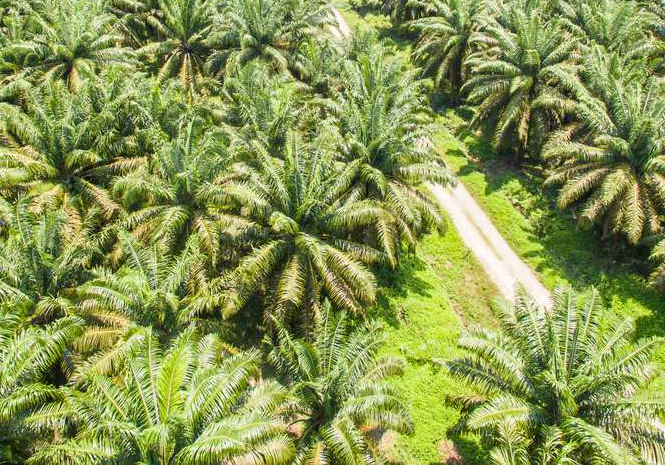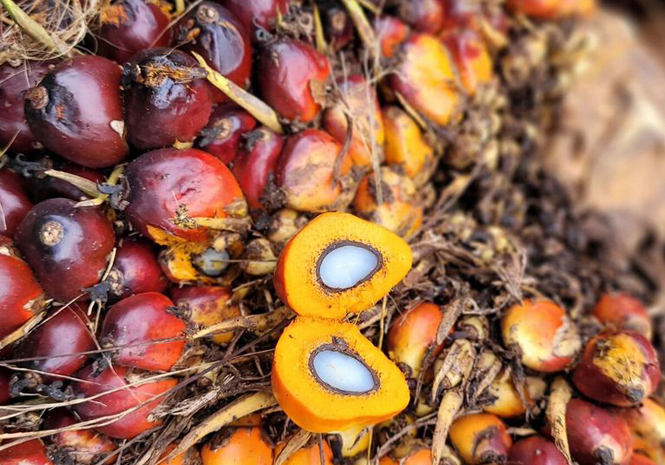
HOMEPRODUCTSAgriculture Agri-Product



Palm oil is an edible vegetable oil derived from the fruit of the oil palm tree (Elaeis guineensis). It is one of the most widely used and versatile vegetable oils in the world, serving various purposes in the food, cosmetic, and industrial sectors. The oil palm tree is native to West Africa but is now cultivated in tropical regions across the globe, with major production occurring in countries such as Malaysia and Indonesia.
In conclusion, palm oil is a versatile and widely used vegetable oil with applications ranging from cooking to industrial uses. Proper storage, handling, and safety considerations are essential to ensure its quality, prevent contamination, and mitigate potential hazards associated with its production and transportation. Sustainable practices are increasingly emphasized to address environmental concerns associated with palm oil production.
Ideal for cooking and baking. Very rich in Vitamin E. No Trans Fatty Acids.
Cholestrol and Lactose FREE. No artificial additives or preservatives.
Application: Deep-frying oils for food industries, i.e. noodles, snack foods, etc. Also used in manufacturing of margarines, shortenings, ice cream, condensed milk, vanaspati, cookies, etc.
Mainly as cooking and frying medium. Also used in manufacturing of margarine and shortening.
Application: Used for production of specialty fats, i.e. margarines, confectionery fats, bakery, milk industry, etc. Also used in production of non-foods, i.e. soap, candle, etc.
Shelf Life is 24 months from the date of production.
| CRUDE PALM OIL (CPO) | |
|---|---|
| >> FFA as Palmitic | 5% Max |
| >> Moisture & Impurities (M&I) | 0.5% Max |
| REFINED BLEACHED & DEODORISED PALM OIL (RBDPO) | |
|---|---|
| >> FFA as Palmitic | 0.1% Max |
| >> Moisture & Impurities (M&I) | 0.1% Max |
| >> Iodine Value (IV) | 50 ‐ 55 |
| >> Melting Point | 33 ‐ 39 °C |
| >> Color (5¼" Lovibond Cell) | 3 Red Max |
| REFINED BLEACHED & DEODORISED PALM OLEIN (RBDPL) | |
|---|---|
| >> FFA as Palmitic | 0.1% Max |
| >> Moisture & Impurities (M&I) | 0.1% Max |
| >> Iodine Value (IV) | 56 Min |
| >> Melting Point | 24 °C Max |
| >> Color (5¼" Lovibond Cell) | 3 Red Max |
| REFINED BLEACHED & DEODORISED PALM STEARIN (RBDPS) | |
|---|---|
| >> FFA as Palmitic | 0.2% Max |
| >> Moisture & Impurities (M&I) | 0.15% Max |
| >> Iodine Value (IV) | 48 Max |
| >> Melting Point | 44 °C Min |
| >> Color (5¼" Lovibond Cell) | 3 Red Max |
| PALM FATTY ACID DISTILLATE (PFAD) | |
|---|---|
| >> FFA as Palmitic | 70% Min |
| >> Moisture & Impurities (M&I) | 1% Max |
| >> Saponifiable Matter | 95% Min |
| CRUDE PALM KERNEL OIL (CPKO) | |
|---|---|
| >> FFA as Lauric | 5% Max |
| >> Moisture & Impurities (M&I) | 0.5% Max |
| >> Iodine Value (IV) | 19 Max |
| REFINED BLEACHED & DEODORISED PALM KERNEL OIL (RBDPKO) | |
|---|---|
| >> FFA as Lauric | 0.1% Max |
| >> Moisture & Impurities (M&I) | 0.1% Max |
| >> Iodine Value (IV) | 19 Max |
| >> Color (5¼" Lovibond Cell) | 1.5 Red Max |
| PALM KERNEL FATTY ACID DISTILLATE (PKFAD) | |
|---|---|
| >> FFA as Lauric | 50% Min |
| >> Moisture & Impurities (M&I) | 1% Max |
| >> TFM | 95% Min |
| PALM KERNEL EXPELLER (PKE) | |
|---|---|
| >> Profat | 21% Min |
| >> Moisture | 12% Max |